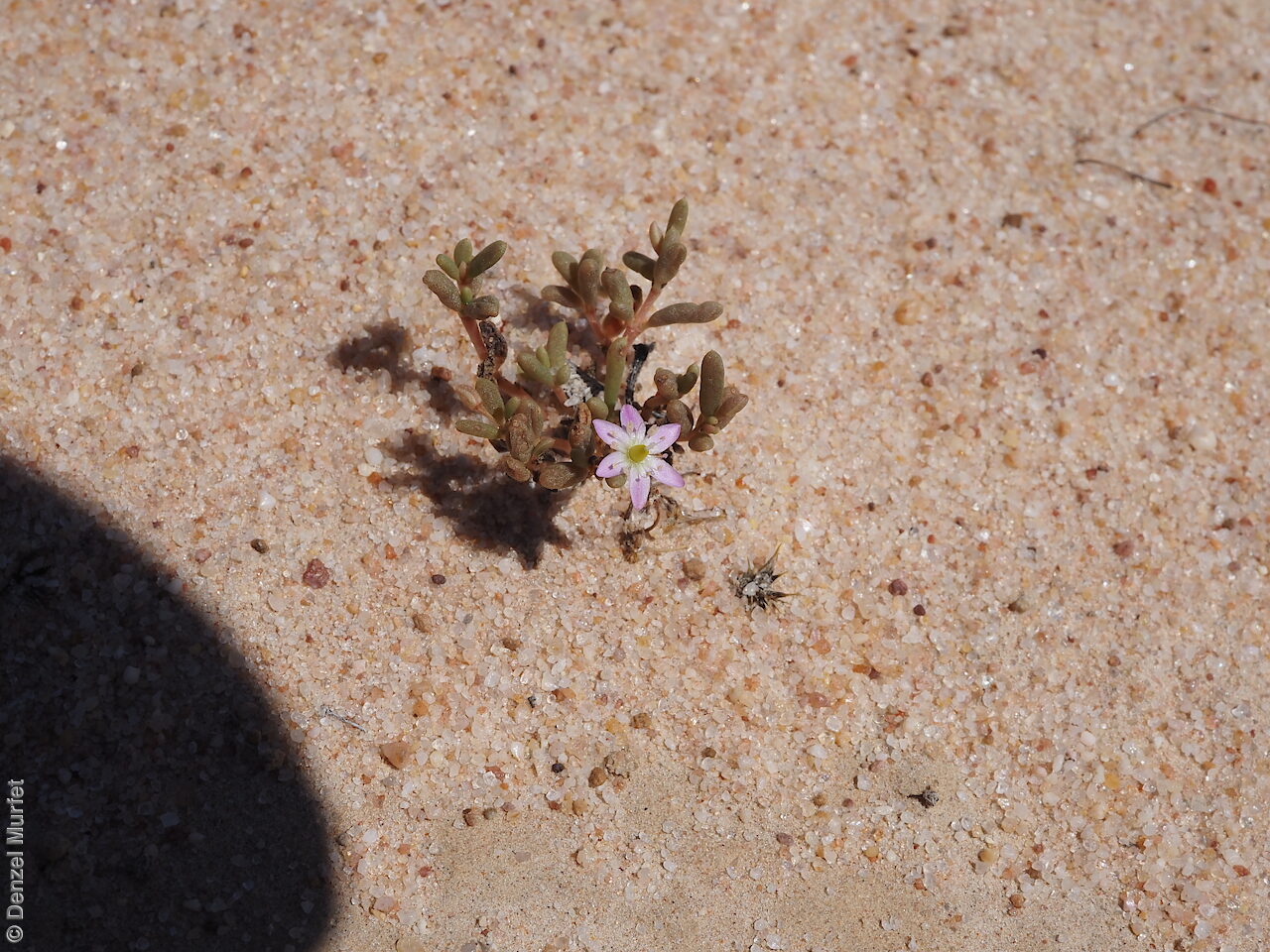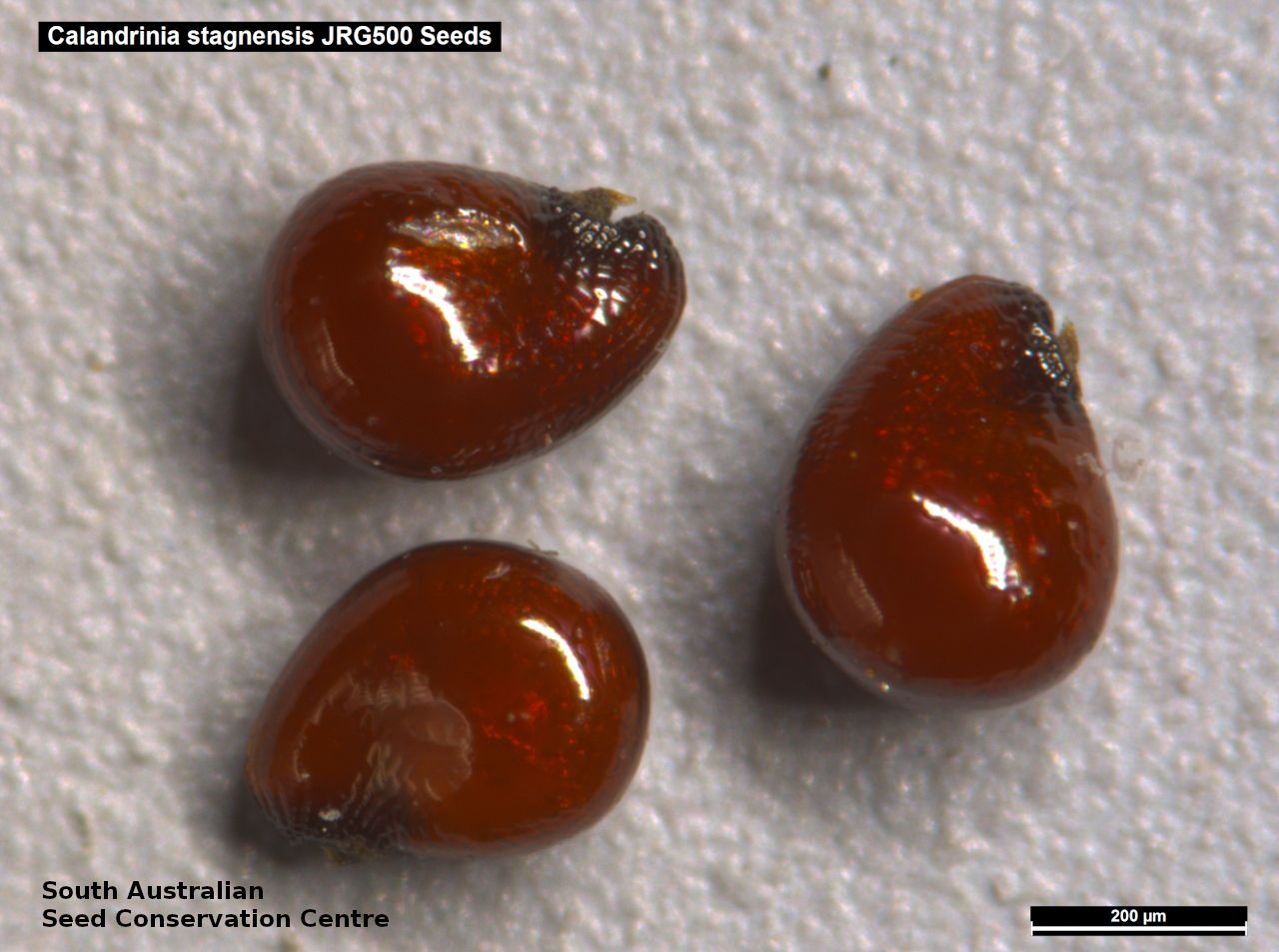
















Prior names
Parakeelya stagnensis
Etymology
Calandrinia named after Jean-Louis Calandrini (1703-1758), a Swiss scientist, professor of mathematics and philosophy. Stagnensis from the Latin 'stagnum' meaning pool, waterhole, referring to the location of the type collection from Ross's Waterhole, Macumba River.
Distribution and status
Found in the north and north-eastern parts of South Australia, growing on temporary freshwater or somewhat saline swamps and claypans and immediate fringes, Chenopod-rich plains, and intermittent watercourses and run-on areas. Also found in Western Australia, Northern Territory and Queensland. Native. Uncommon in South Australia. Common in the other states.
Herbarium region: Lake Eyre
NRM region: South Australian Arid Lands
AVH map: SA distribution map (external link)
Plant description
Prostrate to decumbent annual herb with stems to 10 cm long. Leaves basal and on flower depending on rain. Fruits are brown ovoid capsule to 3.5 mm long with 4-valves, exceeding the spreading sepals. Seeds are shiny red-brown reniform seed to 0.4 mm long and 0.3 mm wide, with a smooth surface. Seed embryo type is peripheral.
Seed collection and propagation
Collect seeds between January and December. Collect mature capsules that are turning brown and contain dark seeds. Place the capsules in a tray and leave to dry for one to two weeks. Then rub the capsules gently by hand to dislodge the seeds. Use a sieve to separate the unwanted material. Store the seeds with a desiccant such as dried silica beads or dry rice, in an air tight container in a cool and dry place.
| Location | No. of seeds (weight grams) | Number of plants | Date collected | Collection number Collection location | Date stored | % Viability | Storage temperature |
|---|---|---|---|---|---|---|---|
| BGA | 340,000 (4.38 g) | 50+ | 19-Oct-2016 | JRG500 Lake Eyre | 1-Nov-2017 | 95% | +5°C, -18°C, -80°C |
Number of plants: This is the number of plants from which the seeds were collected.
Collection location: The Herbarium of South Australia's region name.
% Viability: Percentage of filled healthy seeds determined by a cut test or x-ray.